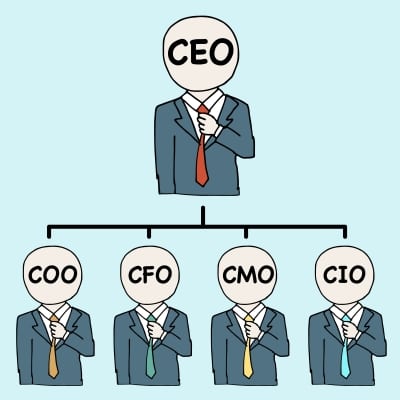As a small business owner, you are no doubt aware that the days of getting an easy business loan are long gone. It is especially hard if your personal credit is affecting your ability to secure funding for your business.
President Obama has proposed a plan to expand SBA loans, and send much-needed capital to community banks, but it could be a quite some time before Congress ever approves those measures. It might also not make much difference in terms of your credit.
You can take steps to repair your personal credit, that will improve your prospects in more than just a business sense. In the meantime, you still need funding and the standard avenues are drying up. This is where alternative funding methods come in handy.
Purchase Order Financing
Purchase order financing is where a financing company offers to guarantee a business’s purchase orders for a percentage of the sale. In many cases, the financing company pays the production costs, and the shipping costs, associated with the purchase order, and also collects the payment
For example: Widget & Sons has an order to produce 5,000 widgets for ABC Company. Widget & Sons does not have all of the supplies, equipment, or personnel it needs to fulfil the order, and is unable to borrow through conventional means. Sparkle Finance offers Widget & Sons the money to buy the equipment, supplies, and personnel it needs to complete the order. When the finished product is delivered, ABC Company pays Sparkle Finance; Sparkle Finance takes its cut off the top then gives the remaining funds to Widget & Sons.
The advantage to purchase order financing is that the lenders don’t screen based on a credit report, or credit score. Instead, they look at the actual order or deal that they are financing to determine if it will be a profitable investment. This way, a company with a good product, but damaged credit, can still compete and doesn’t risk losing a big client.
The disadvantage to purchase order financing is that interest rates and fees can be much more expensive than a conventional business loan. But for a company that doesn’t have many other options, especially if the success of the business depends on filling a specific order within a specific timeframe, it can be a solid option.
Working Capital Loans
A working capital loan is similar to purchase order financing in that a company can borrow funds without a credit check. Unlike purchase order financing, a working capital loan does not fund a specific project but rather provides the company funds for daily operations or business expenses. The borrowing company agrees to use a percentage of their sales to pay back the loan.
For example: Widget & Sons need to upgrade their network and purchase new computers. The company does not have enough money to fund this upgrade, but making the upgrade could significantly boost operations. Widget & Sons borrows $15,000 from WorkCap Financing to make the upgrade, and promises to use 10% of its revenue to pay back the loan. WorkCap Financing deposits the funds into Widget & Sons’ business account and withdraws 10% of Widget & Sons’ total deposits as payment.
A working capital lender can collect a percentage of the daily, weekly, or monthly revenue depending on the individual company. The percentage they collect can also vary, but the borrower can usually pick the percentage.
The advantage to the working capital loan is that there is no credit check. Instead, the lender looks at the borrower’s total revenue to determine how much they can lend. Another advantage is that the borrower can pick the percentage he pays back on his earnings, however a smaller percentage could result in higher fees and it will take much longer to pay back the loan. The third advantage is that you only pay when you have the funds. If you have a slow revenue period, you won’t have a large monthly loan payment hanging over your head.
The biggest disadvantage is that you can’t change the percentage of revenue you use to pay back the loan. For example, if you choose to apply 30 percent of your revenue toward the loan it will pay it off faster; but if your sales you’ll have 30-percent less income. Another issue is that, although you only have to pay when you have revenue, if the bank things you are purposely shunting revenue away from the working capital account, the full amount of the loan could come due immediately. The same goes if you withdraw or move all of the funds before the lender can withdraw its percentage.
Peer-to-Peer Lending
Peer-to-Peer lending, also known as person-to-person lending consists mostly of online clubs that connect businesses with potential investors.
Essentially, a business owner posts a request for funds, along with a plan for how he intends to use those funds. Investors review the requests and decide which ones they want to fund, and how much they want to invest. A business can get funds form one investor, or multiple sources. The business pays the funds back to the site, and those payments are distributed to the investors.
The advantage to peer-to-peer lending is that it is sometimes easier, and cheaper, to get loans through this avenue than through banks. Also, the average term for a loan is three years and you can have the funds automatically deducted from your checking account. Peer-to-Peer loans are also fixed-rate, which means you can amortize them.
The disadvantage is that some peer-to-peer lending sites do not fund businesses, especially if they are startups. However, some do, but it could take a while to find one. Also, unlike working capital loans and purchase order financing, peer-to-peer lenders could require you to enter personal or business credit information, which could affect your rating on the site.
These are just a few of the funding options available to startups and small businesses. If your personal or business credit is preventing you from getting funding through conventional means, one of these alternatives could be the option for you.








































![Content Strategy Tips to Revive Your Healthcare Site [Sponsored Post]](https://storage.googleapis.com/stateless-ceoblognation-com/sites/3/2016/12/chess-603624_1920.jpg)









 |
|